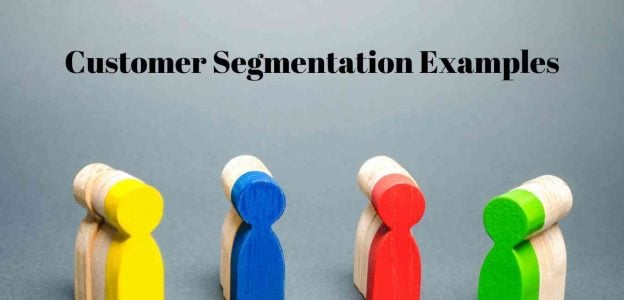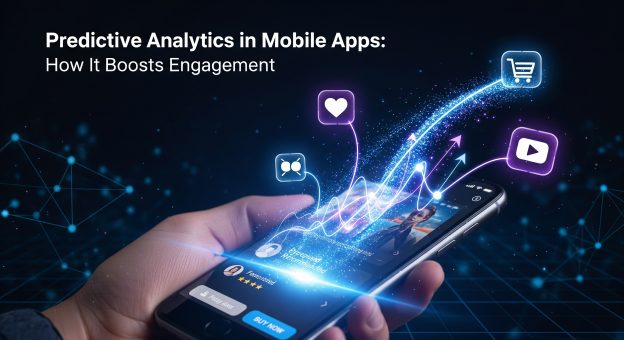Learn from Customer Segmentation Examples (Meaning, Models and Benefit for your business app)

“Marketing without knowing your customer is like shooting in the dark which might or might not lead to beneficial results”.
Owning a robust application will lead you nowhere until you know your potential audience behavior. How they are reacting to your marketing campaigns? And which marketing campaign is effective for which genre of users? For your business/brand to go and grow in the right direction you have to be confident about your customers.
Customer segmentation has to be the very first step of your mobile app marketing strategy.
What is customer segmentation?
Customer segmentation is the process to segregate your potential audience based on different parameters so that you can tailor your marketing strategies in their interest. This process helps you retain your clients to your products or services for a lifetime. Plus, this saves your time and resources which you were likely to waste on the least concerned audience.
For instance: If you own a diversified shopping app you are already serving a large pool including – (men, women, kids), (young, millennials, GenZ and old), (single or married), (rich, middle class), (heavy, moderate buyers), etc. each group prefers to see the deals of their interest. Similar is for online streaming apps e-commerce websites and online grocery marketplace.
Why Customer Segmentation? – Know your customer grow your business
Users do not want their inboxes filled with bulk advertisements. This will neither help the customers nor the business. On the contrary, untargeted bulk advertisement is the most common reason for app uninstalls.
So this is where you need to make the right move by knowing your customers and showing them just the right deal with you.
Apart from knowing your potential clients, customer segregation has additional perks too.
This is how you can benefit from customer segmentation:
1. Absolute Marketing Roadmap –
Customer segmentation will help you decide your marketing strategies. Look for how you can present your products in the interest of a particular group that will surely convert them to buy the deals from you? Marketing and sales targets achieved.
2. Best promotional strategies –
Customers might not need a product from you right now but you showing just the right deal will let them buy and save for later use. So a business must never rest with its promotional strategies.
Now that you have segregated your clientele, your promotional strategies are sorted. Promotional advertisements sent to a specific potential segment will fetch you more leads than targeting a general customer pool. This will also save your time and resources.
3. Strategic growth and product development –
Knowing your potential target audience’s behavior and demands will let you know the scope of development in your products and services. Businesses have to keep on updating their products and services to pace with current demands.
For instance: you have segregated your high-value customers and you know their expectations from your products. You can easily prioritize the deals that appeal to them the most and fetch in some sales in your bucket.
4. Relevance to customer demands –
No matter the customer segmentation is based on industry, age, gender, or purchase interests, you promoting your services with relatable content will definitely have an impact on their purchase patterns. Relevant content will help you pick the right nerve, relate them to you and help them visualize their benefits from your product and services.
For instance: if you have segmented your clientele and are delivering just the right content via online ads, messages, emails. You can ensure that they are sparing time for your content.
5. Complete Recovery of Cost –
Most of the firms are not lucky with their marketing budgets. They have limited resources and need to have a bull’s eye in terms of sales and marketing so that they could spend intelligently without wasting money on the least interested audience. Target your high-value customers and accordingly channelize your marketing funds.
How can you segment your customers?
Customer segmentation can lead a business to great heights but only when it is done in a channelized and correct path. To save you from the inconvenience of wandering the following portion describes everything you need to know about how to do the right customer segmentation.
How can you gather the most relevant information?
-> Online surveys
-> Telephonic interviews
-> Face to face interviews
-> Market research
-> Focusing on current trends relevant to your services
Every business is different and so is the data they need to analyze their customer audience’s interests.
There are millions of parameters based on which you can segregate the crowd but not everything is fruitful for your business. Here is the major information you need which will help you with correct customer segmentation.
Customer Segmentation Models
| B2B | B2C | |
| Geographic | The company resides in which country, state, city, locality. | Country, state, city, locality, residence |
| Demographic | Industry, income | Gender, age, occupation, marital status, languages are spoken, etc. |
| Technological | Technologies they use | Technology, OS, and gadgets they own. |
| Psychographic | Beliefs, vision, goals, etc. | Personality, beliefs, interests, values, and attitudes. |
| Behavioral | Actions, consumption habits, and responses | Actions, consumption habits, features used, frequency, browsing history, previous purchases, order value, etc. |
Other Customer Segmentation Models
| Active Users – | People who have installed your application but are inactive on your application. |
| Potential Engagements – | People who are using your app but are yet to make a purchase |
| Converted Users – | People who have converted (might have low to average value or purchase frequency) |
| Inoperative Users – | Those who were active on the application before but are now un-operative. |
“Customer segmentation is a must for any business app to rule.” You can place analytics and attribution SDKs in your application that will work in your favor and let you analyze your target audience and effectively plan your marketing campaigns.
There is no successful app without powerful SDKs. To know more about the useful SDKs that will help your business app to grow, click the link: What is an SDK? (Introduction, Types, and Benefits)
How can you make the best out of your Customer Segmentation Analysis?
1. Know your customers – Basic information about your clients. What are their benefits from your app? and how you can provide them with customized solutions? Know your users as much as you can.
2. Set your goals – The very next step after you have segregated your clientele, you have to define separate goals from each segment and how you can convert the most from each segment via promotions and correct marketing strategies.
3. Get users habitual – Now that you know your user, implement marketing strategies that will make users frequent to your application. Use push notifications or in-app notifications to tell them the best deals.
4. Let your users speak – Let your value users know that you appreciate their loyalty and purchase from your app. Highlight their importance and let them revert back to your products and services. Respond to their reviews, emails, and calls.
5. Do not be too specific – Try to segregate your users into three adjectives. If you are not able to categorize your target audience in three adjectives then the process will be too complicated and time-consuming. Do not micro analyze your customer segments. Let the list remain big.
6. Test and Optimize – Now that you have segregated your potential audience, you can easily test your marketing and promotional strategies and optimize by introducing changes accordingly.
7. Revise – Though demographic and geographic segments do not happen to change frequently the case is not the same with behavior, technology, and psychographic segments. Revise the segments and look for the scope of improvement in your marketing strategy. Remove the outdated strategies and go for the latest and the robust ones.
Conclusion
There are many customer segmentation examples that companies have implemented and reached heights. A large database of thousands or millions of users will not help you until you know their interests and behavior and create segments to treat each group with custom and specificity.
As important as customer segmentation is, it is also hard to accomplish without the proper implementation of technology in your application like powerful SDKs, RFMs, push/in-app notifications, bot assistance, survey forms, registration forms, etc. For a profitable investment go to the best app development company that will help you implement the technologies to know your customers well.




